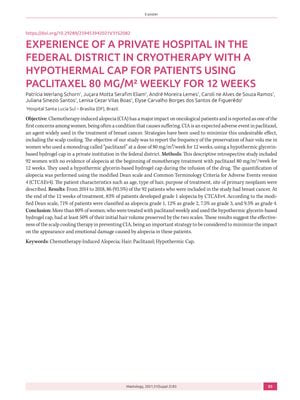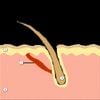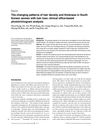Experience of a Private Hospital in the Federal District in Cryotherapy with a Hypothermal Cap for Patients Using Paclitaxel 80 mg/m² Weekly for 12 Weeks
January 2021
in “
Mastology
”

TLDR Scalp cooling therapy helped over 80% of women keep at least half their hair during chemotherapy.
In a retrospective study conducted from 2014 to 2018 at a private hospital in the Federal District, 92 women undergoing weekly chemotherapy with paclitaxel 80 mg/m² for 12 weeks used a hypothermic glycerin-based hydrogel cap to prevent chemotherapy-induced alopecia (CIA). The study aimed to evaluate the effectiveness of this scalp cooling method in preserving hair volume. At the end of the treatment, 83% of patients experienced only grade 1 alopecia according to the Common Terminology Criteria for Adverse Events version 4 (CTCAEv4), and based on the modified Dean scale, 71% had grade 1 alopecia, 12% grade 2, 7.5% grade 3, and 9.5% grade 4. The results indicated that over 80% of the women retained at least 50% of their initial hair volume, demonstrating that scalp cooling therapy can be an effective measure to reduce the emotional and aesthetic impact of hair loss in patients treated with paclitaxel.





